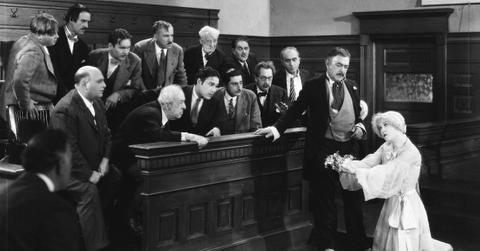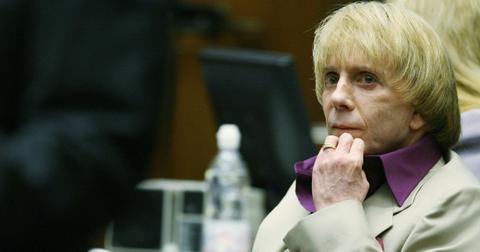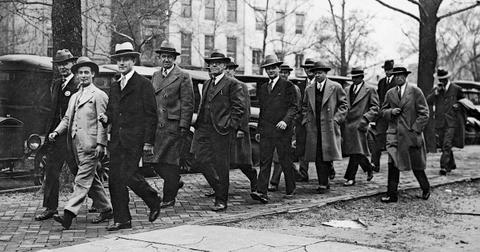After the mistrial there is the after-mistrial. So after the mistrial, there is usually another trial. We tried!

At one time in his life, Phil Spector was one of the most important people in the music business. He produced music for incredible artists like The Beatles, John Lennon, The Ramones, and Cher. He was prolific and innovative, but he was convicted of murder later in his life. In February 2003, he shot and killed actor Lana Clarkson. His trial began four years later and according to The New York Times, it ended in a mistrial.
Article continues below advertisement
Article continues below advertisement
How did Spector go from a mistrial to an eventual conviction? The Los Angeles County District Attorney’s Office chose to retry the case, but that doesn’t always happen. A mistrial can go in a few directions. Let’s get into what happens when a mistrial is declared and why that occurs.

Article continues below advertisement
What happens after a mistrial is declared?
A mistrial occurs when a “criminal trial ends before it concludes,” per Lawyer.com. Once a judge declares a mistrial, the prosecution usually moves to retry the case, just like they did in the Spector trial. This decision isn’t made lightly because a retrial can be an expensive process that draws on quite a bit of resources.
In Spector’s case, the jury was deadlocked with a 7-5 split leaning towards a conviction. In a rare move, the judge gave the jury further instructions and sent them back to deliberate. This ended in another deadlock of 10-2. This resulted in Judge Fidler retaining “orders for silence, preventing lawyers and others in the case from speaking publicly.” He then set a new hearing date. Not being able to reach a unanimous verdict isn’t the only reason why a mistrial occurs.
Article continues below advertisement

Why are mistrials declared?
According to the American Bar Association, there are a number of reasons why a mistrial can be declared beyond a deadlocked jury:
- death of a juror or attorney
- an impropriety in the drawing of the jury discovered during the trial
- a fundamental error prejudicial (unfair) to the defendant that can’t be cured by appropriate instructions to the jury (such as the inclusion of highly improper remarks in the prosecutor’s summation)
- juror misconduct (for example, having contact with one of the parties, considering evidence not presented in the trial, conducting an independent investigation of the matter)
Article continues below advertisement
As serious as this is, there are times when a bit of comedy can be squeezed out of a mistrial. In April 2011, The Washington Post picked up a story about New York lawyer, Joseph Rakofsky. A D.C. Superior Court judge declared a mistrial in a 2008 murder case after Rakofsky “numerous signs that he lacked knowledge of proper trial procedure, including telling the jury during his opening statements that he had never tried a case before.” The defendant was able to fire him.
Article continues below advertisement
What initially tipped Judge William Jackson off was the fact that his opening statement went on for 30 minutes longer than usual. During that time, he made references to the “projects of Southeast D.C., where there was always gambling, guns. and drugs.” He was trying to establish that his client grew up in a dangerous environment but as the defense pointed out after objecting, this bore no relevance in the case.
The Washington City Paper reported that Rakofsky took to his Facebook page to excitedly tell the world that his first murder trial was a mistrial. He neglected to mention the fact that the mistrial was due to his own incompetence. He posted, “1st-Degree Murder…MISTRIAL!” which garnered seven likes from friends.
In June 2011, Rakofsky more or less sued the internet after claiming he was humiliated by the media attention, per The Atlantic. To be more specific, he sued The Washington Post as well as “80 other reporters, news outlets, and legal writers.” It was later dismissed. Looks like it was more of a miss, than a trial.
Source: https://www.distractify.com/p/what-happens-after-a-mistrial-is-declared
